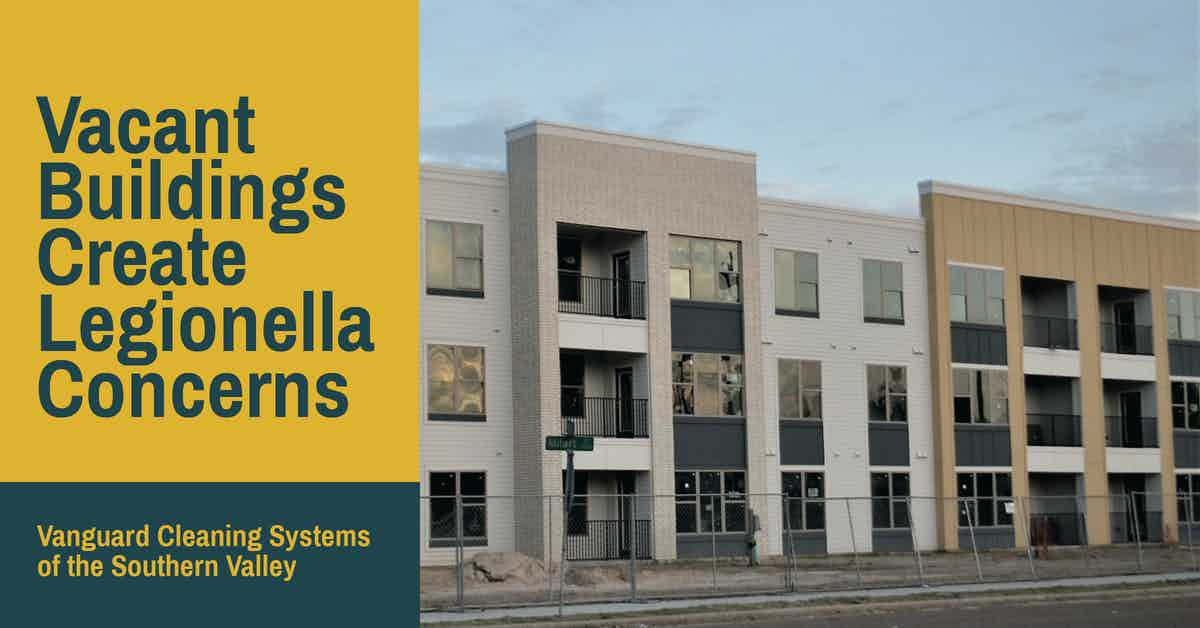Large facilities, including schools, hotels, and cruise ships, shuttered due to COVID-19 travel and operational restrictions are at an increased risk of transmitting deadly legionella bacteria through a number of commonly used systems that have sat dormant for months.

How COVID Could Create a Potential Legionella Outbreak
In an effort to combat the spread of SARS-CoV-2, most local and state governments ordered the closure of many schools and businesses, to one degree or another.
Additionally, travel restrictions led to the shuttering of cruise liners and other resorts.
While these facilities were closed, their water and HVAC systems were likely turned off to save vital resources.
While well-intentioned, that decision created an ideal environment for the growth of legionella, the bacteria that causes Legionnaire's disease and Pontiac Fever.
Legionnaire's Disease and Pontiac Fever
Pontiac fever is a nonfatal, less severe version of legionnaire's disease, which was first diagnosed in 1968 after several Michigan state health department workers became ill.
The illness closely resembles an acute influenza infection, which spontaneously resolves, so typically goes undiagnosed.
Unlike Legionnaire's Disease, Pontiac Fever does not lead to pneumonia.
Conversely, Legionnaire's Disease can be fatal and, in addition to pneumonia, can cause:
- A cough
- Shortness of breath
- High fever
- Muscle pains
- Headaches
- Nausea
- Vomiting
- Diarrhea
The illness was first diagnosed after a 1976 American Legion conference in Philadelphia where more than 200 attendees became ill and more than two dozen subsequently died.
Both illnesses originate in contaminated waterways--such as unused pipes and human-made water systems in large facilities--that service decorative fountains, drinking water, showers, sinks, cooling towers, water heaters, HVAC systems, and hot tubs.
The Health Concern
Instances of legionnaire's disease have increased significantly over the last two decades and primarily afflict those with pre-existing conditions--generally, the same demographics that have suffered so heavily under the recent pandemic, including:
- Those 50 and older.
- Current smokers or those who have recently quit.
- Individuals suffering from chronic lung disease, emphysema, or chronic obstructive pulmonary disease (COPD).
- Individuals with cancer or other illnesses such as diabetes, kidney, or liver failure, and;
- Anyone with a compromised or weakened immune system.
Aresoloized Bacteria
Exposure to legionella rarely occurs through the consumption of drinking water.
More commonly, it is spread via aerosolized particles that are spread through air ducts, making long-dormant HVAC systems a top concern.
The problem with HVAC systems, in particular, is that they often feature coils where condensation collects.
If that condensation comes from an infected water source, then it's just sitting there, primed to be aerosolized.
Like HVAC units that have sat untouched, plumbing that hasn't had water flow through it for some time is a prime target for Legionella.
What's worse is that Legionella incidents are already associated with larger buildings that have more complex water systems, because water stagnation is more difficult to prevent in these facilities.
They are also more likely to have large cooling towers, devices that experts say are also susceptible to Legionella.
Legionella Prevention
Depending on the age of your building and certain risk factors, legionella can take root in your water system in a matter of hours if left to stagnate.
Prior to opening up to the public, it is advisable to:
- Have your water systems tested for legionella and other bacteria, as well as mold, lead, and copper contamination.
- Flush all the systems with running water to eliminate stagnation--the amount of time will depend on the size of the water system.
- Install synthetic substrate material into the HVAC and air handling units to filter out legionella and other microbes.
- Coat shower heads with organosilane--a type of organic nano-coating that can prevent the spread of legionella to humans, and;
- Clean and disinfect all surfaces with visible biofilm, including spas, water storage tanks, and cooling coils.
References & Resources
- Legionnaires' disease
- Pontiac fever
- Preventing Legionella Made Simple
- Developing a Water Management Program to Reduce Legionella Growth & Spread in Buildings
Takeaway
The rate of Legionnaire's Disease infections has increased an estimated 200% in the last twenty years, with some healthcare officials claiming that many outbreaks have gone unreported.
Mandatory quarantines and facility closures have created a perfect environment for the bacteria that causes Legionnaire's Disease and Pontiac Fever to fester and multiply in the human-made waterways that service schools, businesses, healthcare facilities, and resorts.
Facility-wide pre-opening cleaning and maintenance programs are highly recommended for all facilities that were forced to close for a prolonged period to avoid spreading these and other diseases to their customers, students, patients, and workers.
Outsourcing is a proven method for cost-effectively cleaning large-scale facilities quickly and efficiently.
If you would like more information regarding the effectiveness of high-performance infection prevention and control measures, or if you would like to schedule a free, no-obligation onsite assessment of your facility's custodial needs, contact us today for a free quote!
In Bakersfield CA, call (661) 437-3253
In Fresno CA, call (559) 206-1059
In Valencia CA, or Santa Clarita CA, call (661) 437-3253
In Palmdale CA, or Lancaster CA, call (661) 371-4756

